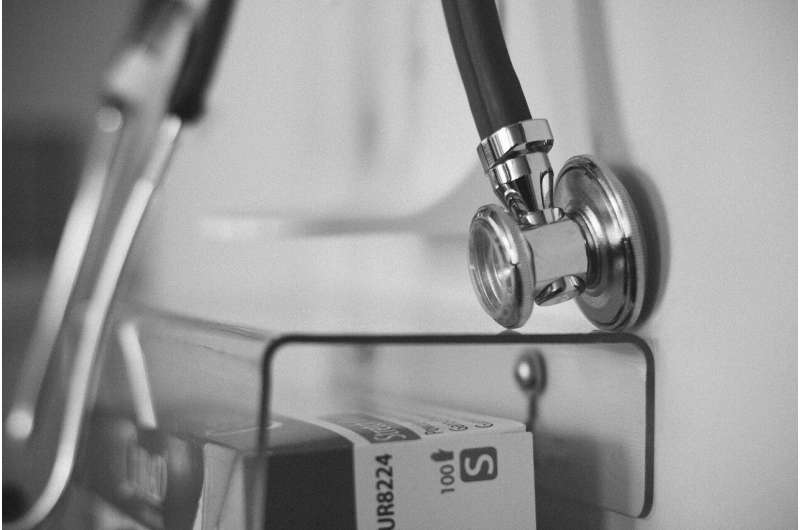
To Brandon Mulvany, the past 11 months have felt more like five or ten years. And though it’s not over yet, he’s finally feeling a sense of relief he hasn’t felt since the summer.
Mulvany is an intensive care unit nurse at Mount Carmel Grove City Hospital, where he worked through the winter coronavirus surge of cases and hospitalizations that swamped Ohio’s medical systems.
“Prior to COVID, I would say I was a pretty high on life kind of guy,” Mulvany said. “Going through that whole experience, there were a lot sleepless nights and a lot of sitting in your car staring at your steering wheel when you got off work.”
Throughout the past several weeks though, Mulvany said a sense of cautious optimism has begun to creep into the ICU.
New cases of COVID-19 plummeted in February across Ohio and hospitalizations have followed on that downward trend.
As of Wednesday, a total of 1,338 Ohioans were hospitalized with the virus, according to the Ohio Department of Health. That’s down by more than 500 from two weeks earlier far lower than on Nov. 30, when more than 5,000 Ohioans were hospitalized with COVID-19 at the same time, state data shows.
The steep drop off is a relief for Mulvany and his coworkers who have been treating virus patients for nearly a year now.
“It seems like way longer than a year. … It’s starting to feel semi- back to normal,” he said. “I’m just hoping we don’t get (another) wave.”
Mulvany’s colleagues at other central Ohio health systems echoed his sentiment.
Erin Layton, a registered nurse at OhioHealth’s Grant Medical Center in Downtown Columbus, said that the mood is more positive now in the ICU than it was just a month or two ago.
Though cases keep declining, Layton said she and her fellow nurses are somewhat skeptical.
After a smaller bump in patients in July, Layton said she and her coworkers thought the worst might be behind them. The winter surge proved that wasn’t the case and with new variants of COVID-19 being discovered, she’s worried the same thing could happen again.
One variant, B.1.1.7, was first identified in the United Kingdom and is thought by epidemiologists to be more contagious.
As of Wednesday, 1,881 cases of the U.K. variant had been found in 42 states, including 11 in Ohio, according to the CDC. It is widely expected to become the dominant strain of the virus in America by March.
A similar strain, COH.20G/501Y, was discovered in Columbus by doctors at Ohio State University in January. It implied that the virus is mutating in similar fashion all over the world, Ohio State doctors said at the time.
Another strain, B.1.351 was first discovered in South Africa and is also thought to spread more easily.
Fourteen states have identified 46 cases of the South African variant, according to the CDC. So far, it has not been detected in Ohio.
“We’re hopeful there is some end in the near future,” she said. “But we are very aware that this might become like the flu where just like every winter there’s a rise in cases.”
Amid the winter surge was one bright spot, said Dr. Matthew Exline, medical director of the medical intensive-care unit at Ohio State University’s Wexner Medical Center. It was the vaccine, he said.
The first doses of Pfizer’s COVID-19 vaccine were made available to frontline health care workers Dec. 14. Shots from Moderna, the second vaccine provider, were first administered Dec. 21 in central Ohio.
Although health care workers like Exline were still in the midst of a multi-month surge, knowing that the vaccine would decrease the risk of them bringing the virus home to their families was exciting, he said. The day ICU employees were able to sign up to receive their first shot from the medical center was a memorable one, Exline said.
“There was just this palpable relief everyone got that day,” he said. “It was the dead of winter; we were in the worst of the surge and for this one day there was this light shining. … I think it allowed more people to focus more on their jobs.”
But the surge continued and while they were vaccinated, the volume of patients tested hospital workers, Exline said.
When health care workers have to take on more, Exline said it means they aren’t able to give as much attention to each patient as they’d like to do. That’s especially true when a majority of the patients being admitted are some of the sickest doctors and nurses have ever seen, he said.
“No one likes to admit it, but your intellectual energy, your emotional energy, they’re finite,” Exline said. “Everyone has their limits.”
Mulvany knows what it’s like to reach that limit thanks to the winter spike.
Typically, a nurse in Mount Carme’s Grove City ICU handles one or two patients at a time. In the height of the surge though, Mulvaney said he and his fellow nurses were sometimes juggling three patients at a time and he was often so busy that it felt like more than that.
Despite some improved spirits in the ICU, Mulvany said the mood remains somber as many coronavirus patients still aren’t fully recovering or surviving. Though cases are decreasing, Mulvany said he and his coworkers are hesitant to get their hopes up that there won’t be another surge in the near future.
Source: Read Full Article
